Hybrid RAIDs are a combination of two or more RAID configuration levels to achieve a balance between performance, data protection, and storage efficiency. However, RAID recovery is doable with the proper equipment and knowledge. Data recovery professionals can help you assess the damage, identify the RAID configuration and restore your lost data quickly and securely. With the right team and resources, you can safely and successfully recover data from a RAID hybrid array.
What is Hybrid RAID?
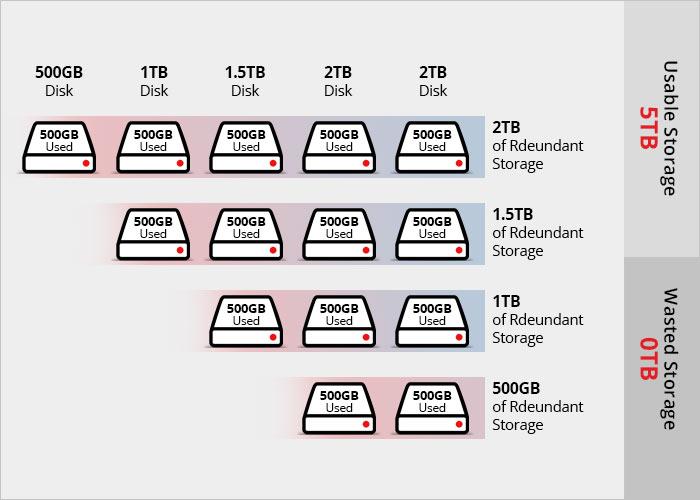
Hybrid RAID is a combination of two or more RAID arrays. The advantages of various RAID levels are intended to be offered in a single system. RAID 10, which combines the striping of RAID 0 with the mirroring of RAID 1, is the most popular kind of hybrid RAID. This provides both redundancy and performance benefits.
There are several RAID levels, including RAID 0, RAID 1, RAID 5, RAID 6, and Nested RAID levels, such as RAID 10, 50, and 60. Each RAID level provides a different balance among its major goals: reliability, availability, performance, and capacity. All the RAID levels follow three data storage mechanisms – Striping, Mirroring, and Parity.
It necessitates a thorough comprehension of both the hybrid RAID’s particular configuration and the underlying RAID levels. This is why it is important to choose a data recovery service provider with experience in recovering data from hybrid RAID systems.
Benefits of Hybrid RAID
Hybrid RAID offers several benefits over traditional RAID configurations, including:
- Improved Performance: By combining the benefits of multiple RAID layers, a hybrid RAID system can provide better performance than a regular RAID system. For example, RAID 10 combines the performance benefits of RAID 0 with the redundancy benefits of RAID 1, resulting in a faster and more reliable system.
- Higher Fault Tolerance: By using multiple layers of redundancy, hybrid RAID systems provide greater fault tolerance than conventional RAID systems. This means that even if multiple cycles fail simultaneously, the data can be recovered without loss.
- Increased Storage Performance: By making better use of available storage, a hybrid RAID scheme can improve storage performance over conventional RAID schemes. For example, RAID 5+1 combines the storage efficiency of RAID 5 with the redundancy benefits of RAID 1
- Flexibility: Hybrid RAID configurations allow RAID layers to be created to meet specific performance, reliability, and storage requirements. This means companies can choose the system that best fits their requirements and budget.
Common Causes for Data Loss on in Hybrid RAID System:
Data loss is a common problem that can occur in a RAID hybrid system. Data loss can occur for a number of causes, including hardware failure, software corruption Firmware or Hardware Failure:, and human mistake. Hard disc malfunction, a power outage, or overheating are all examples of hardware failure.
A virus assault or a software breakdown can both result in software corruption. Human error can occur due to accidental deletion or formatting of data. In any of these cases, the data on a RAID hybrid system can become inaccessible or lost.
RAID data recovery services can help recover lost data by using specialized software and hardware tools to restore data from damaged or corrupted RAID systems. It is important to act quickly when data loss occurs on a RAID hybrid system to increase the chances of successful data recovery.
Steps to Recover Data from a RAID Hybrid System
Recovering data from a RAID hybrid system may seem a daunting task, but with the right approach, it can be done effortlessly. However, you’d need a dedicated RAID data recovery tool that has a range of advanced features, making data recovery from hybrid RAID systems easy yet effective at the same time. Let’s look at the steps we can use for recovering data from corrupt or damaged Hybrid RAID –
- Install Stellar Data Recovery Technician and launch it.
- On the first screen, select the type of data you want to recover. By default, All Data is selected, and all the checkboxes are checked. Click Next once you’ve finalized your choice.
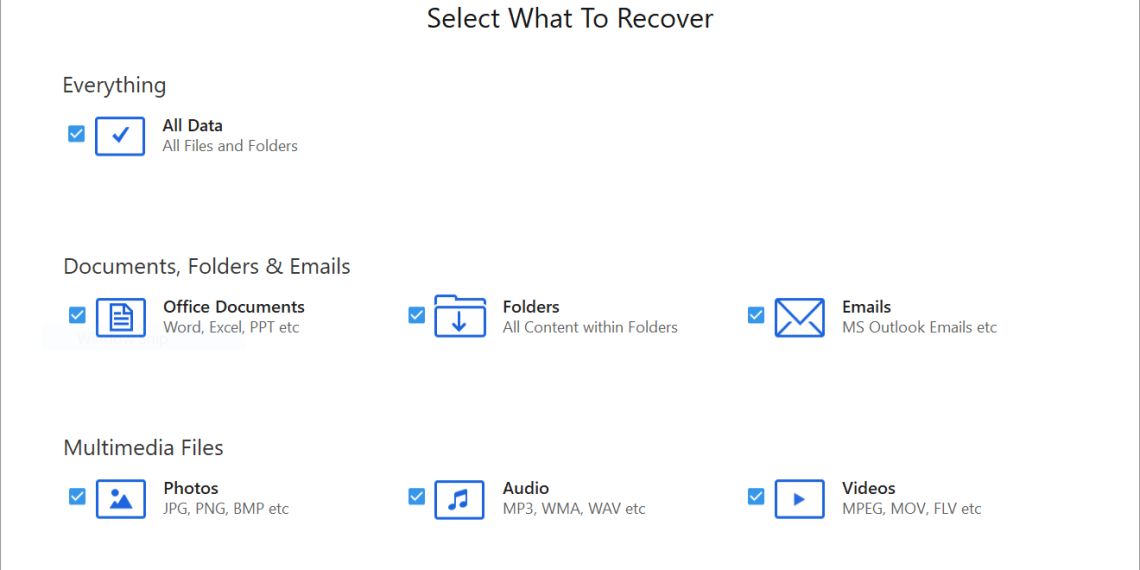
- On the next screen, check the ‘RAID Recovery’ option at the bottom of the screen and click Scan.
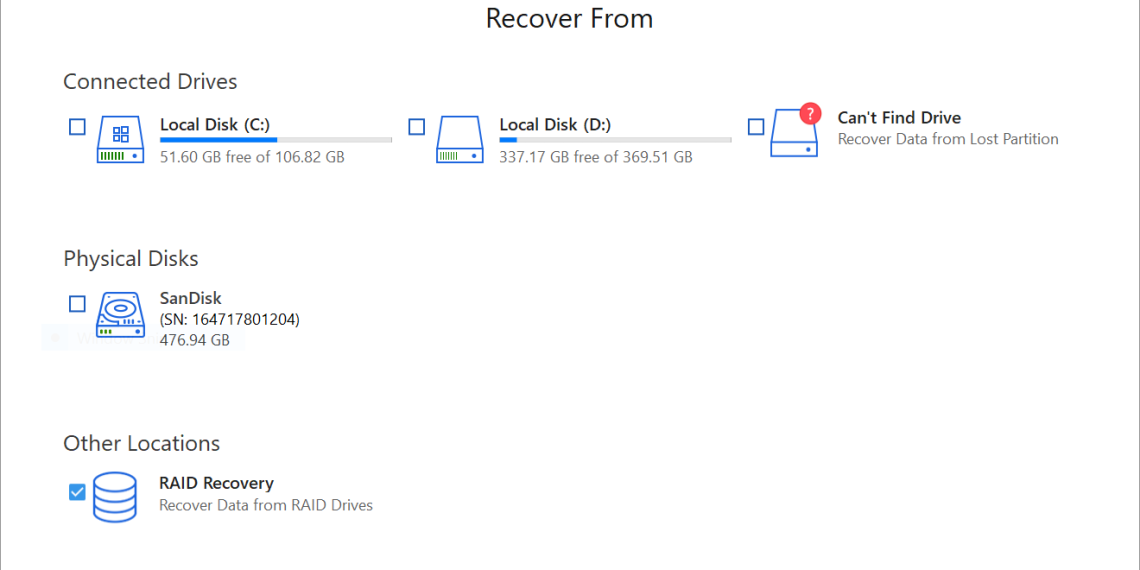
- A new ‘RAID Reconstruction’ window will open. Follow the below steps in the given order:
- Click on the RAID tab that you are scanning, for e.g. – RAID 5
- In the ‘Select Hard Drives to Reconstruct RAID’ section, select the missing Hard drives and click on ‘>’ button to add them under the ‘Move hard drives up/down for disk order’ section. You can remove any hard drive at this stage by clicking on the ‘<’ button.
- In the ‘Move hard drives up/down for disk order’ section, place the drives in order by using the UP and DOWN buttons present there.
- Next, in the ‘Select RAID Parameters’ section, select the details for various parameters using their respective drop-down menus.
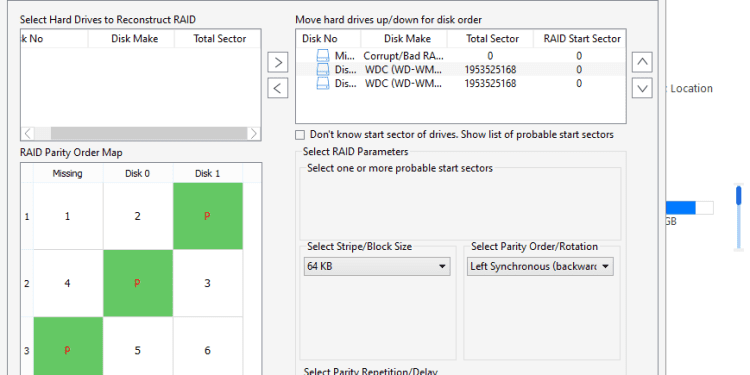
Note – If you don’t know the Parameters, you can check the ‘Don’t know start sector of drives. Show list of probable start sectors’ checkbox. Under it, select a value for ‘Select one or more probable start sectors’ using its drop-down menu.
- Click Build RAID. The software will start building the RAID.

- Once the RAID is reconstructed, a single RAID volume will be displayed next on the ‘RAID Recovery’ screen.
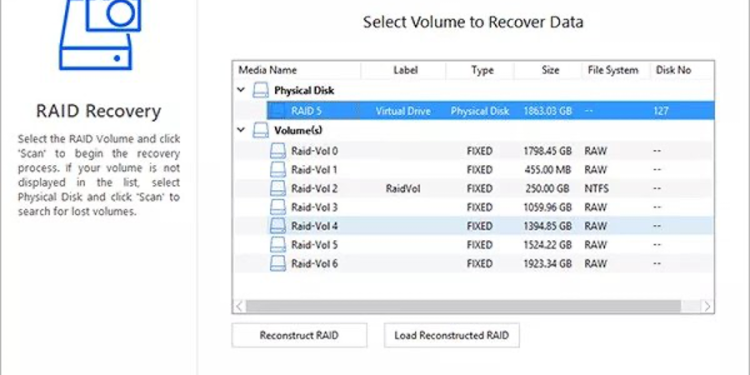
- On this screen, the reconstructed RAID will be shown as a single volume under Physical Disk section. Expand the ‘Volume List’ to list all the found RAID array volumes under it.
- Select the RAID volume from where you wish to recover your lost data and click Scan.
How Can Professionals Help with the Recovery?
It might be difficult to recover RAID data from a hybrid RAID system, especially if you’re not familiar with the procedure. Here is where hiring a pro can be useful. A reputable provider of data recovery software/services has the equipment, knowledge, and experience required to restore data from any RAID system, including hybrid RAID.
They also have a team of experts who can work together to ensure that the recovery process is successful. Professional help can save you time and money, as well as ensure that your data is recovered safely and securely.
Conclusion:
Hybrid RAID data recovery can be a challenging and complex operation, but with the correct equipment and knowledge, you can recover your lost data. Avoid losing important data due to a failing RAID system. To get back on track, get in touch with a reputable RAID recovery provider right away. Keep in mind that paying for expert data recovery services can help you protect your essential data while also saving time and money.







